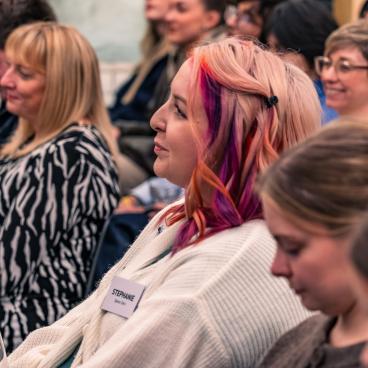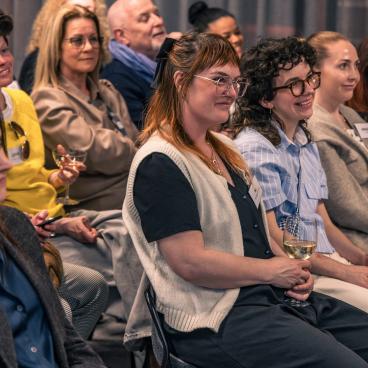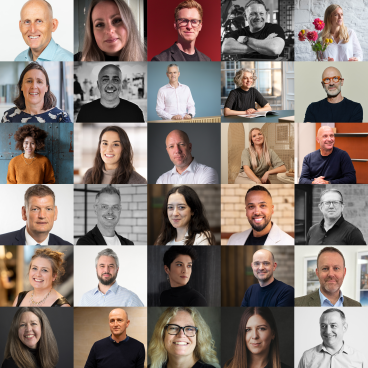Isn’t designing for EDI in the workplace just design?
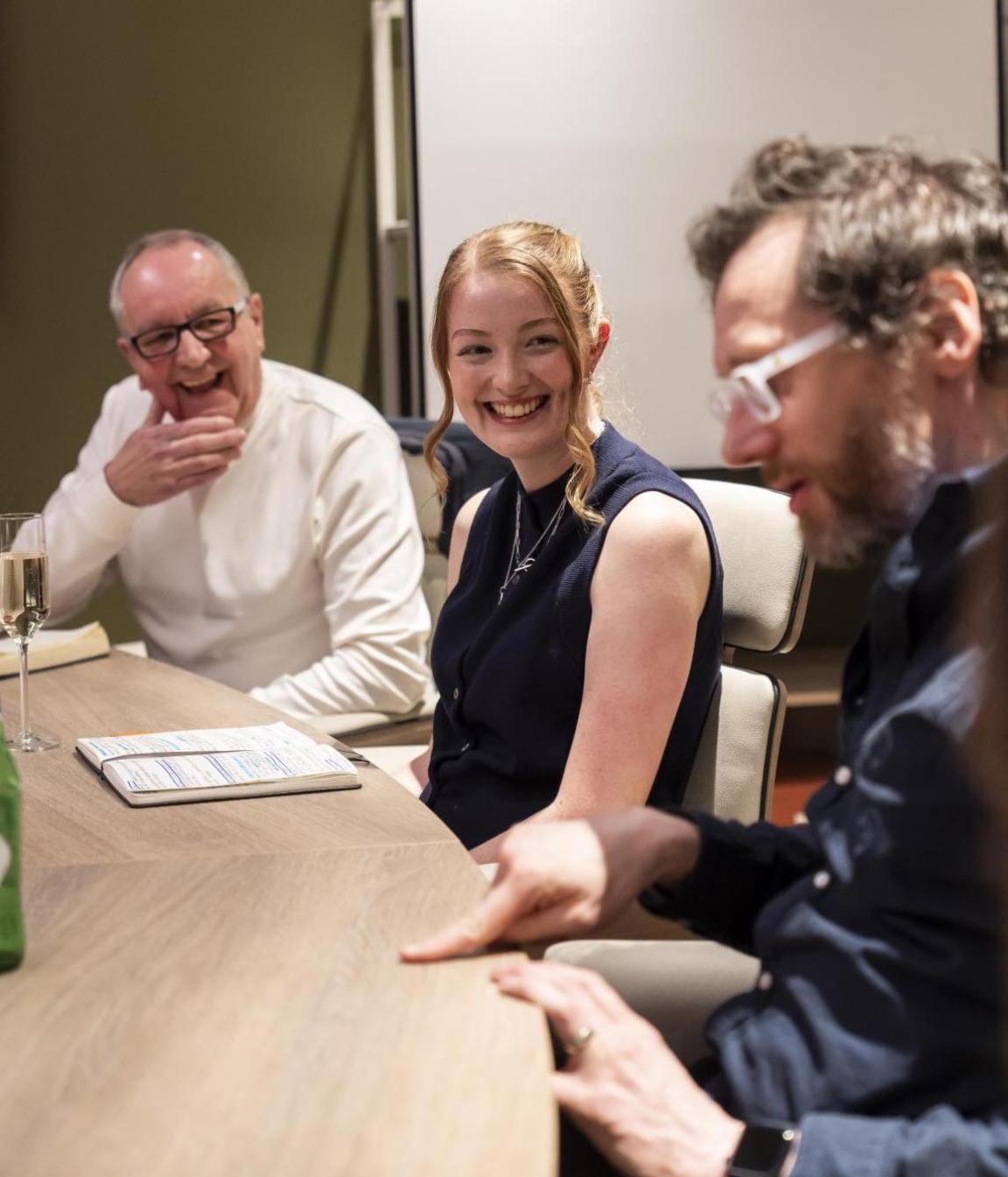
We invited seven sector professionals to consider the question: ‘Isn't designing for EDI in the workplace just design?’
The consensus was that, in some ways, yes. But not just ‘design’. Rather, ‘good design’. Are clients onboard? Increasingly. Does it cost more? Sometimes. But it’s worth it.
Above all else, two points were made clear. EDI applies to us all. And communicating our learnings is the only way we can move forward as an industry.
Read the full discussion, which took place at Material Source Studio Manchester below, covering all of the above and more…
Our guests
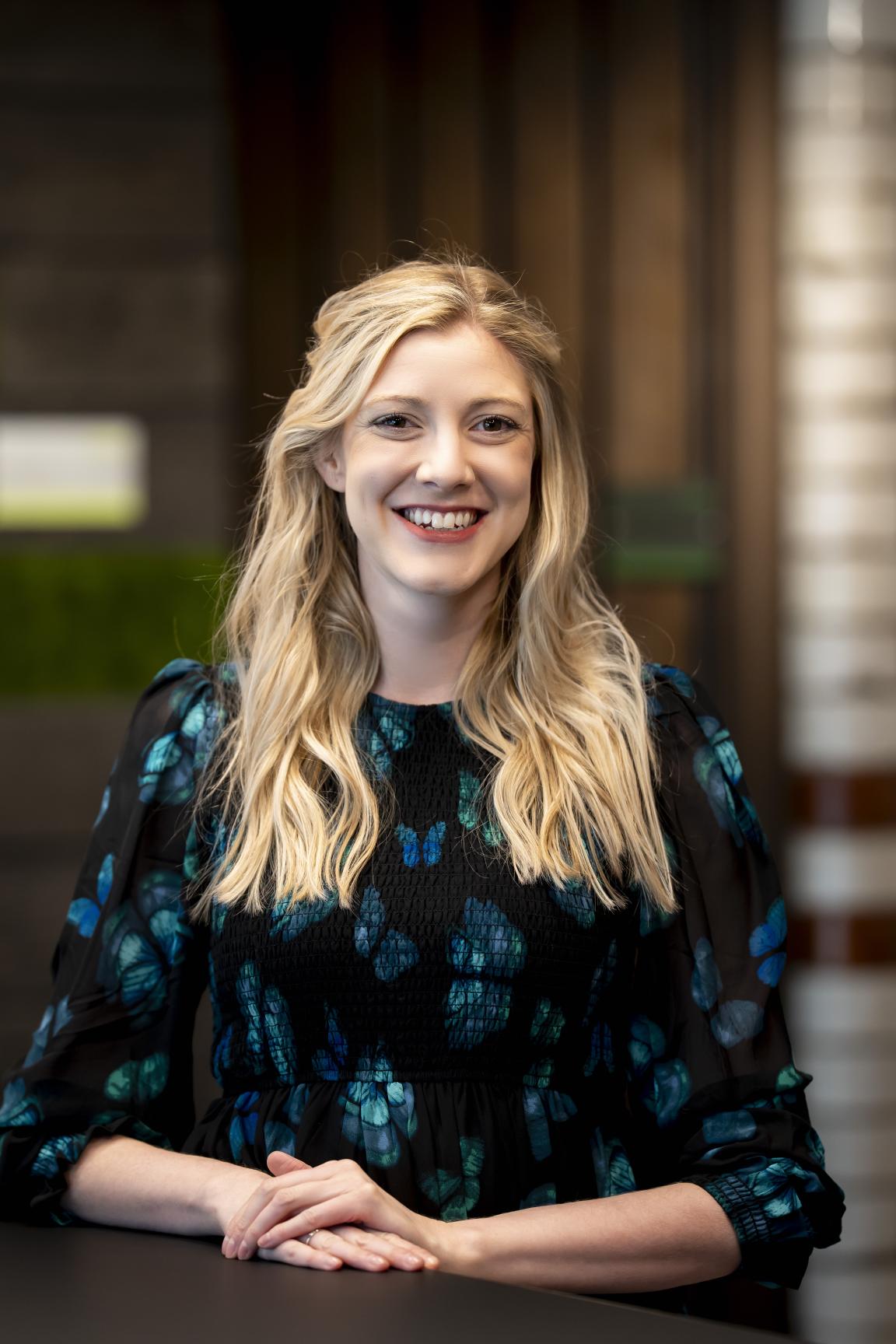
Gemma Copp, project architect, DMWR Architects
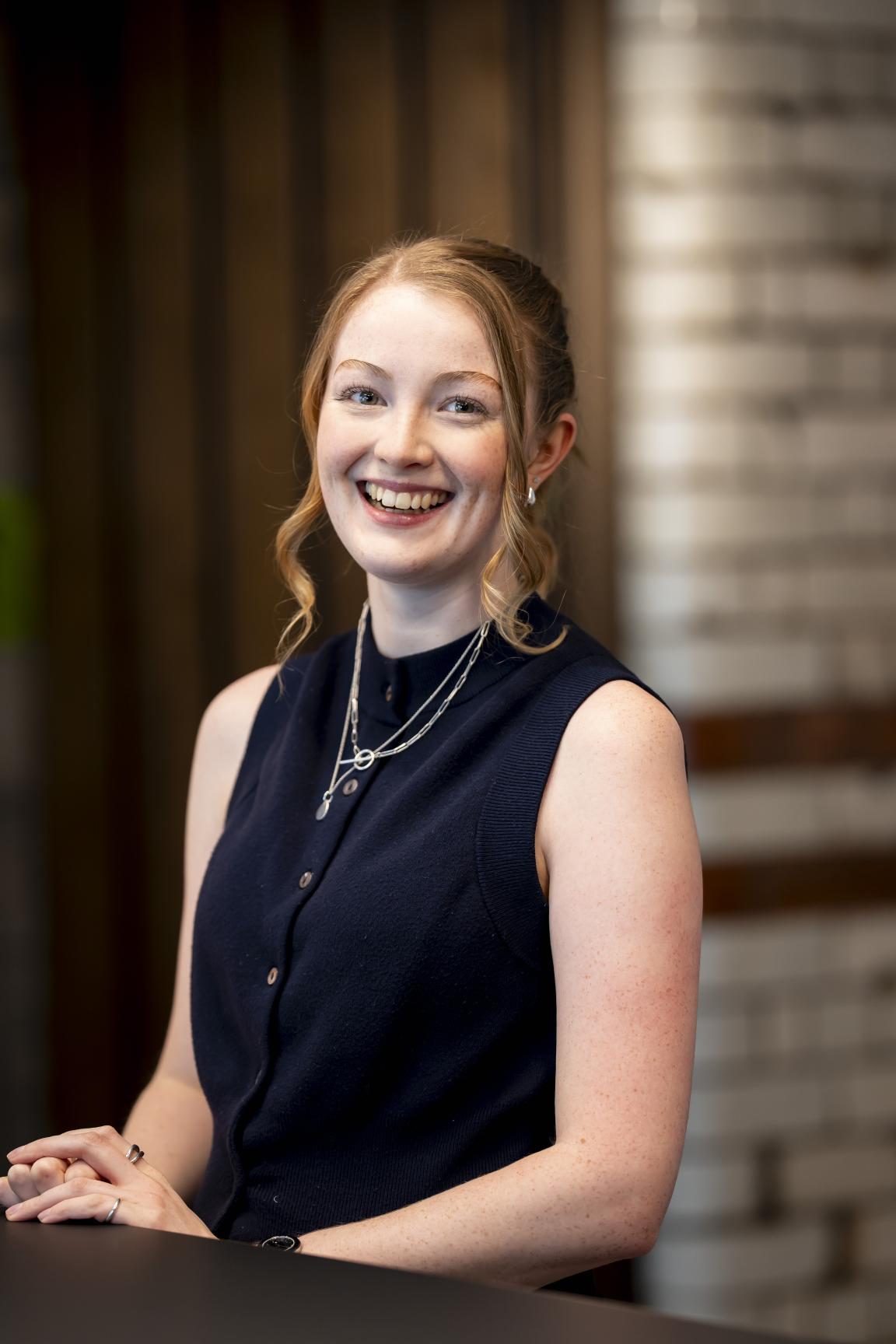
Maddie Woodhead, Part II architectural assistant, AEW Architects
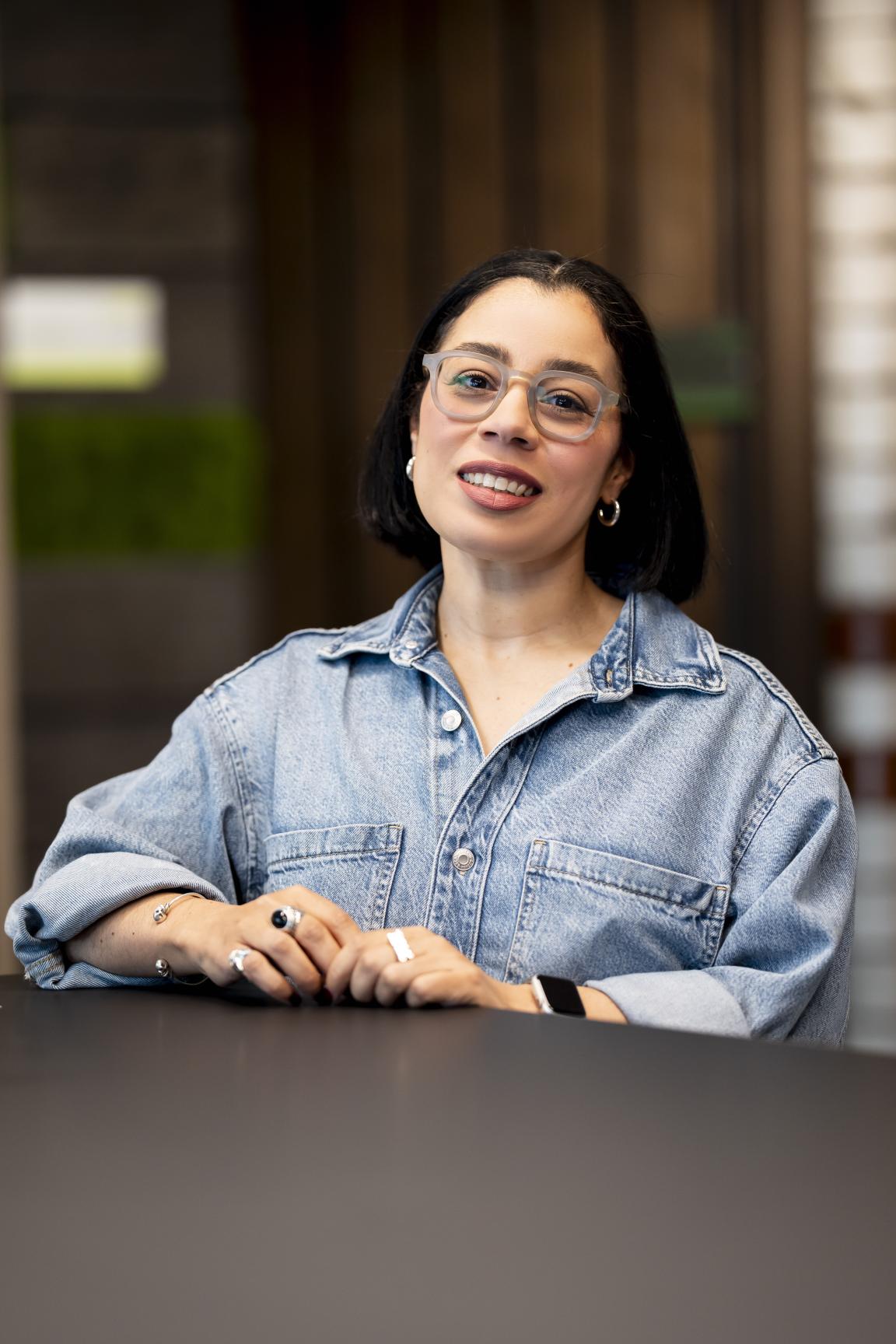
Abigail Carpe, creative director, a-nd design studio
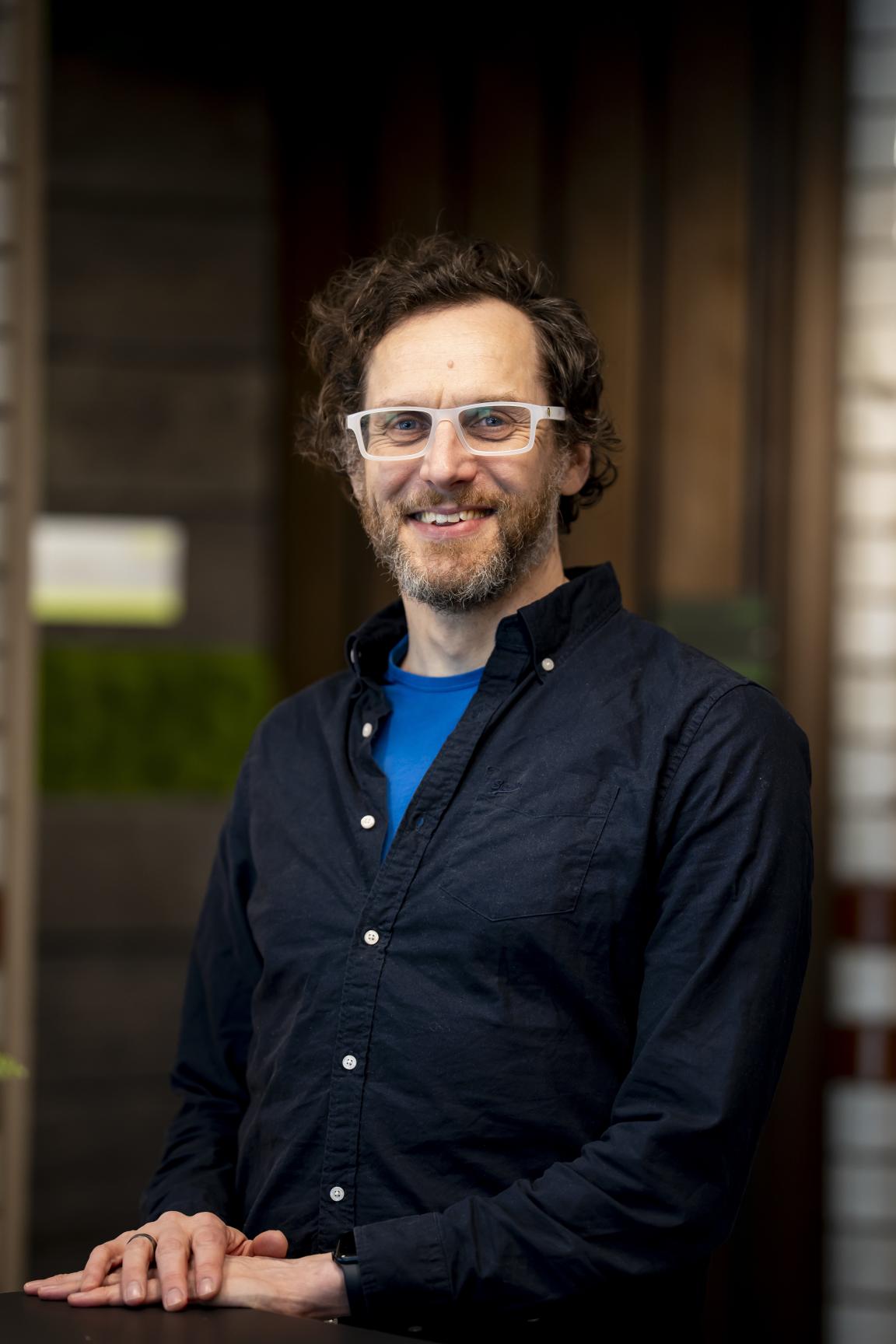
Neil Bowker, associate director, AtkinsRéalis
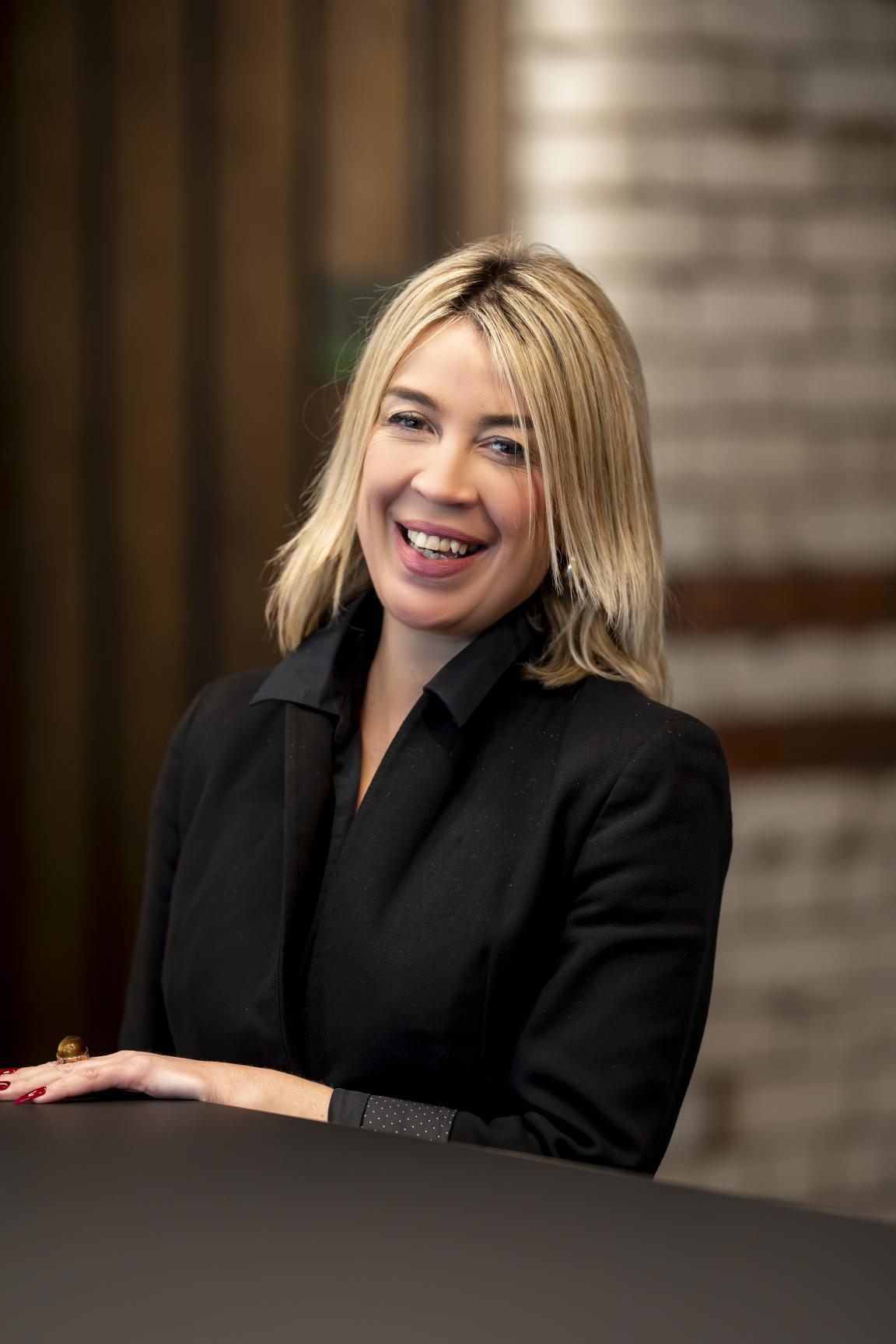
Leanne Armstrong, creative director, Black Ivy Design
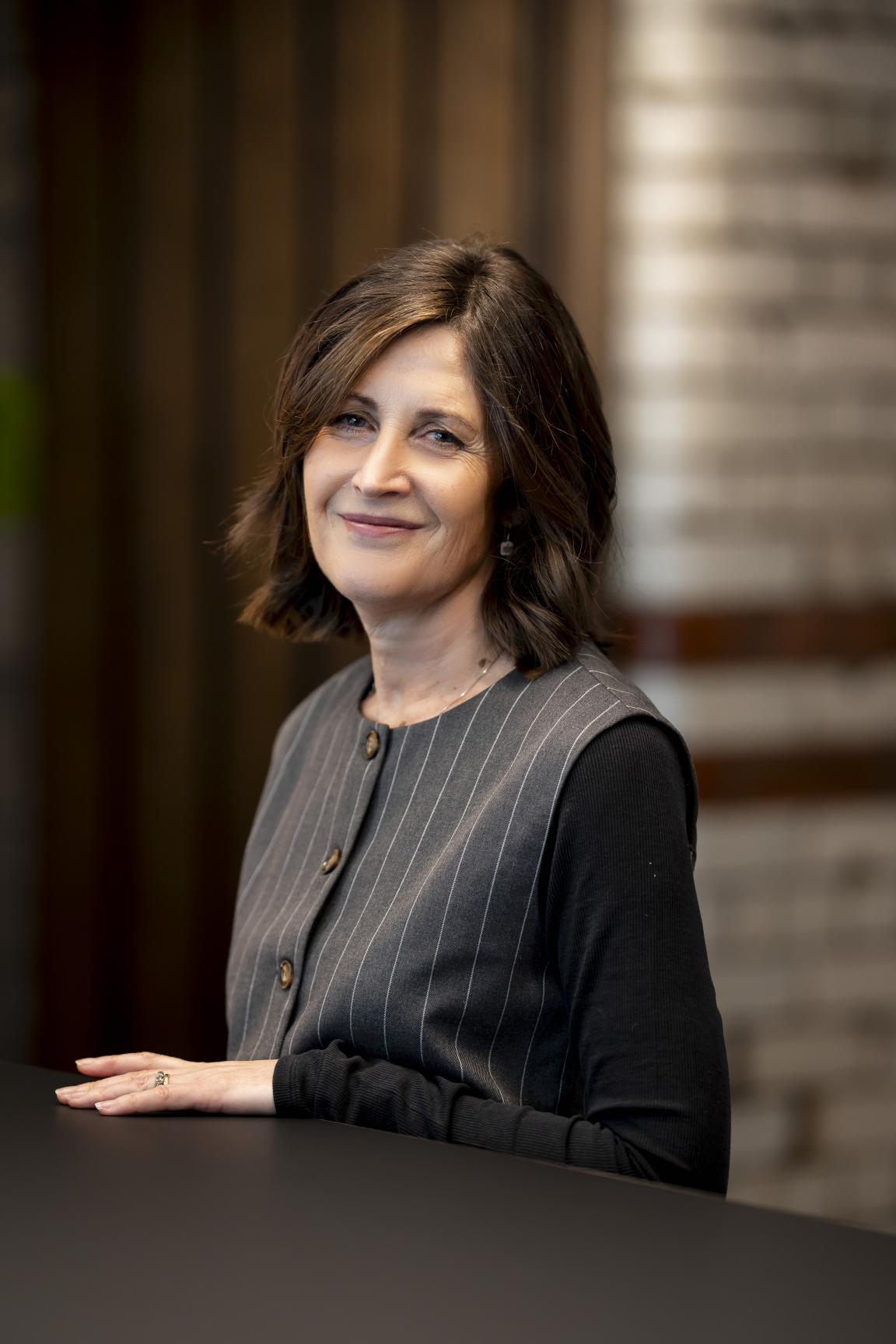
Sara Darwin, principal, phi Architects

Richard Bailey, architectural & design consultant, Crown Paints
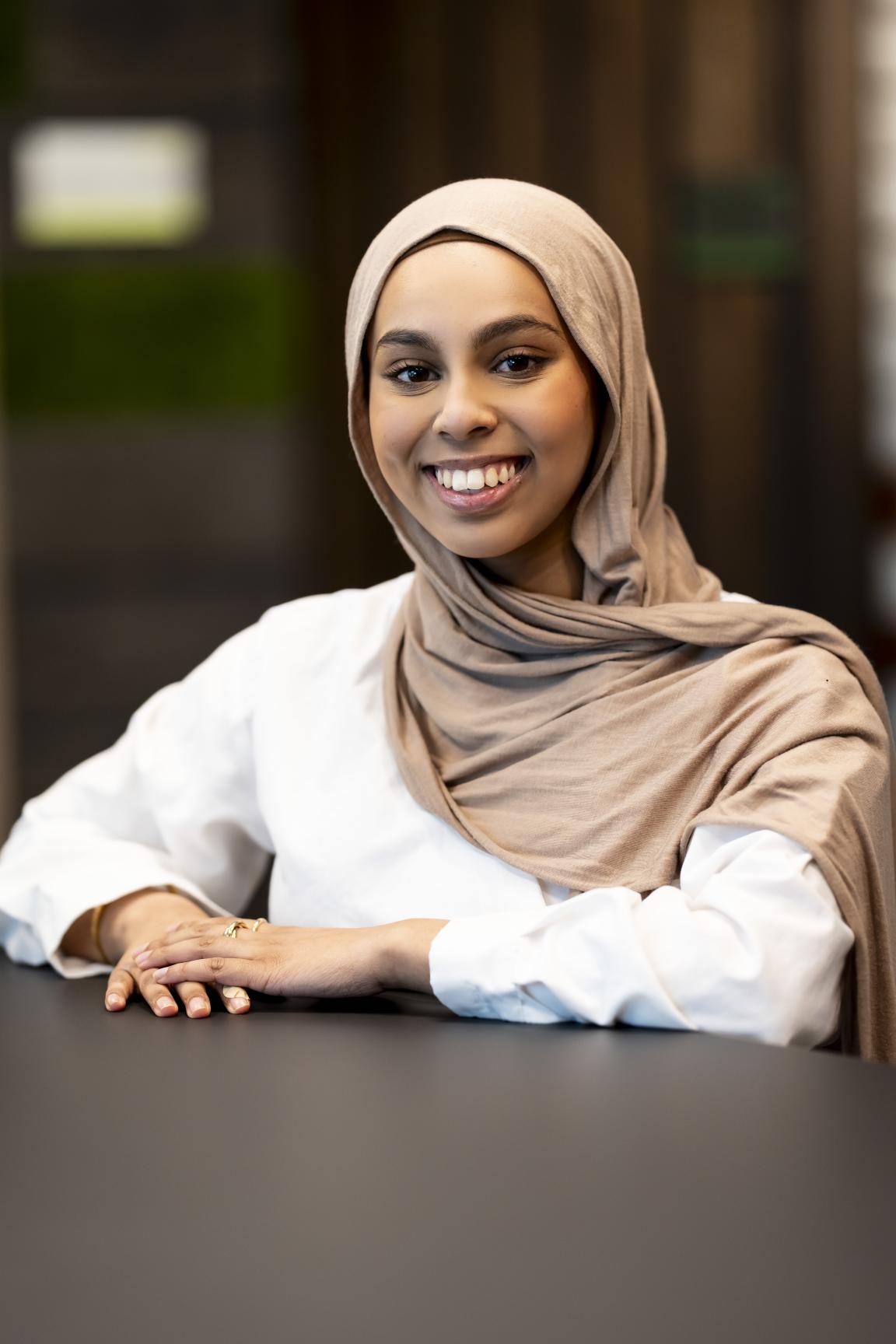
Akeefah Tasnia, Master of Architecture student, Manchester School Architecture
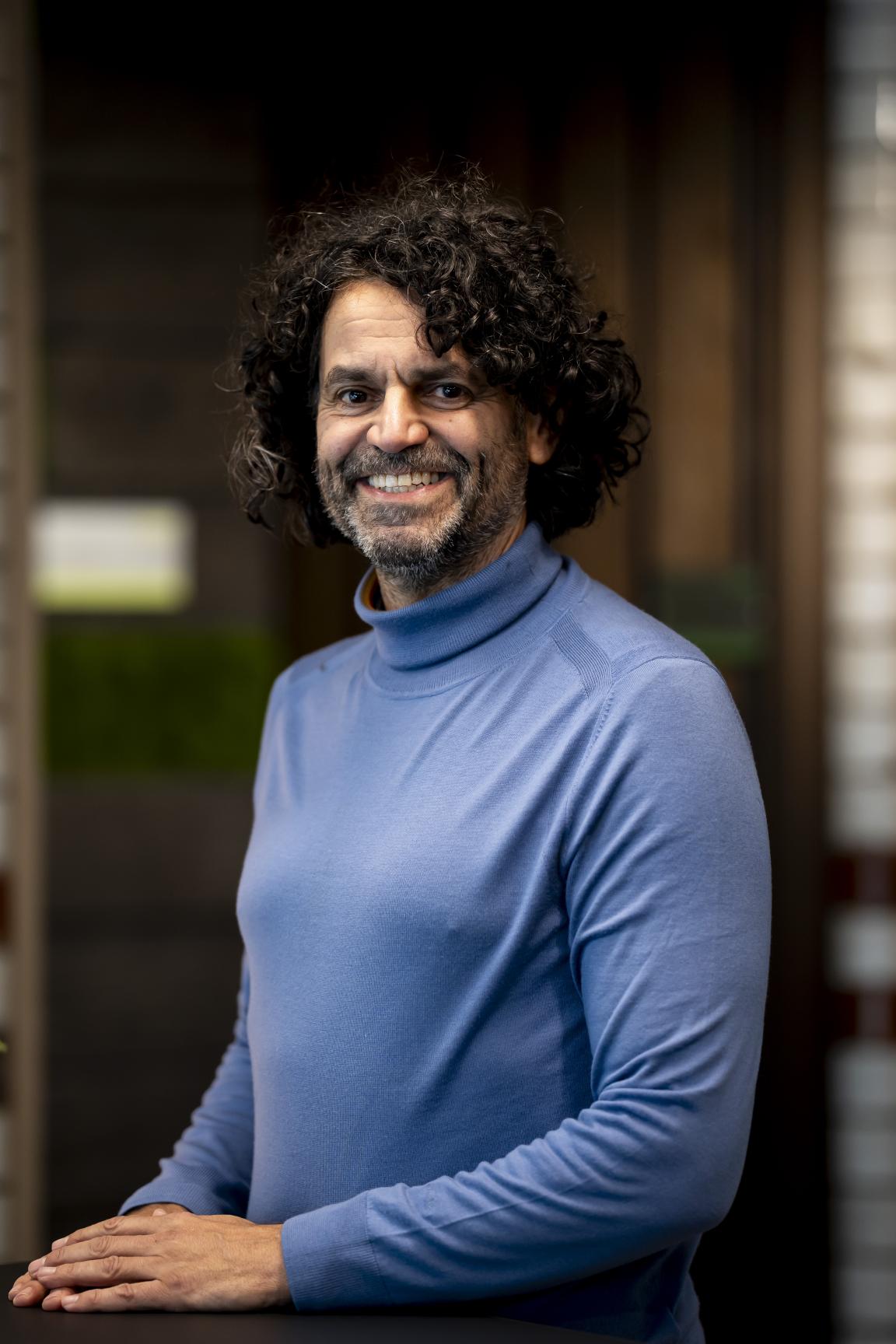
David Smalley, director, Material Source Studio
More than the minimum
“EDI is a gigantic subject, isn’t it?” Began host, David Smalley, director, Material Source Studio. “Every brain is different. It's like a fingerprint. And people talk about neurotypical as normal, and there are people on ‘the scale’. But of course, that's not accurate. We’re all different.
“In the built environment, though, we’ve done almost the same thing for 40-50-years. One could argue that the Building Safety Act has shaken things up. But a lot has been done the same, and that must be quite challenging for you as designers? Though perhaps never more interesting? Where do we start?”
“Where do you start? But also, where do you stop?” suggested Abigail Carpe, creative director, a-nd design studio. “How much do you allow for? How do you test whether you’ve been successful?”
“How can you possibly design for everyone?” David continued.
Sara Darwin, principal, phi Architects, believes the overwhelming nature of the topic “frightens a lot of designers – because it’s so open ended.”
“What are the rules?” she adds, “We had Part M and now we have PAS 6463…”
… “I don’t think we can ever get to the finish line – we’ve just got to keep on learning this, and understanding what other people are doing in the space so we can gain more knowledge and refine and improve”, suggested Neil Bowker, associate director, AtkinsRéalis.
“And to know what you’re doing is actually correct”, added Leanne Armstrong, creative director, Black Ivy Design. “It might be ok with Building Control, but are you catering for everybody?”
“For me”, commented Maddie Woodhead, Part II architectural assistant, AEW Architects & co chair of the practice’s EDI committee, “it's the fact that there isn't necessarily ‘correct’. So, what you're doing isn't necessarily correct, but it’s not being fearful of that, and empowering designers to be able to make choices that okay - they're not always going to be right for everyone - you're never going to get it right 100% of the time - but empowering them to gain the knowledge to even try those things.
“Because it is easy to be fearful of the topic, and then just fall back on ‘this is what we've always done’.”
“This is a process that will always be going on – there’s never an actual end”, Akeefah Tasnia, Master of Architecture student, Manchester School Architecture, said in agreement with Neil, while raising the point that ‘just good enough’ doesn’t cut it when it comes to EDI. “We also need to make sure that we’re going above the bare minimum – looking at Part M, or Part L even – how do we make that a bit more accessible as well?”
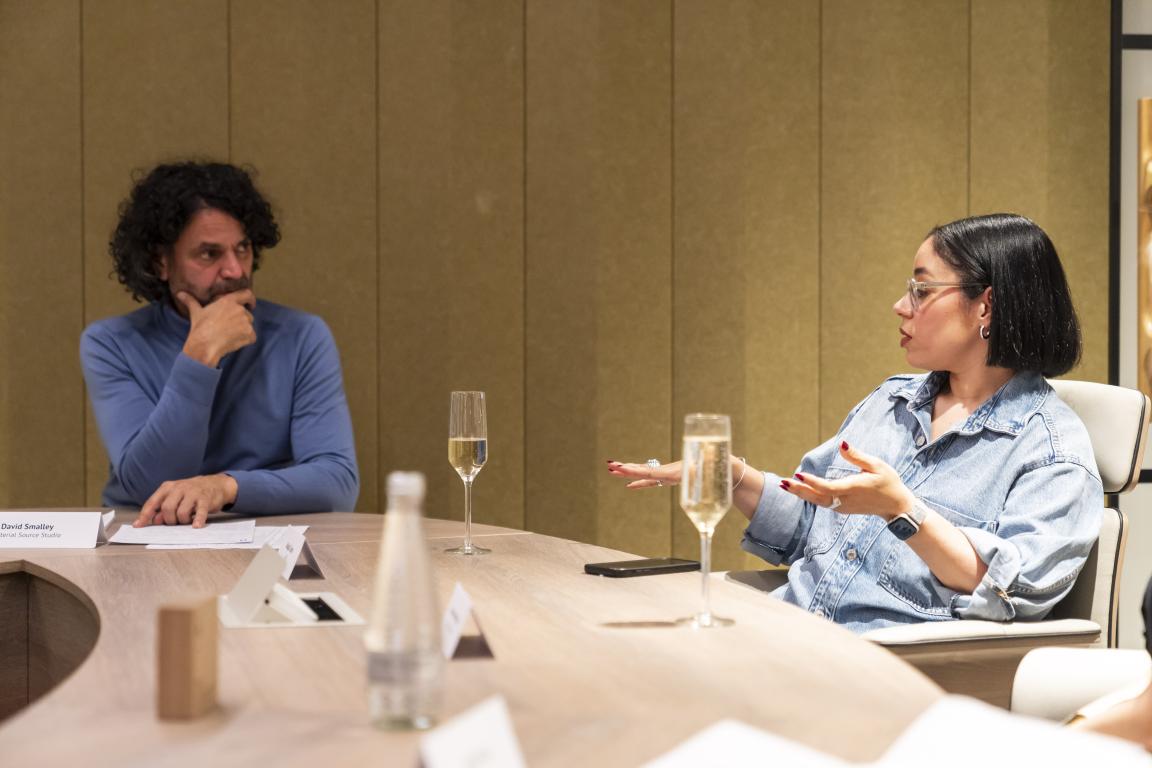
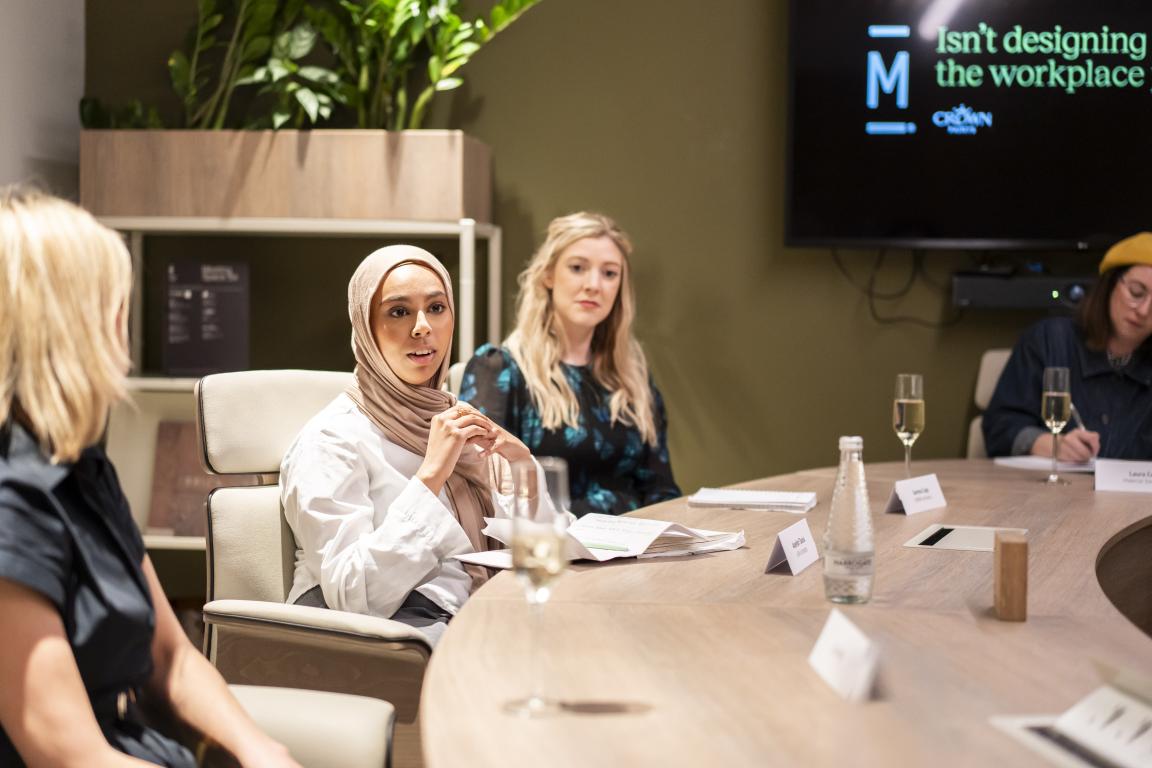
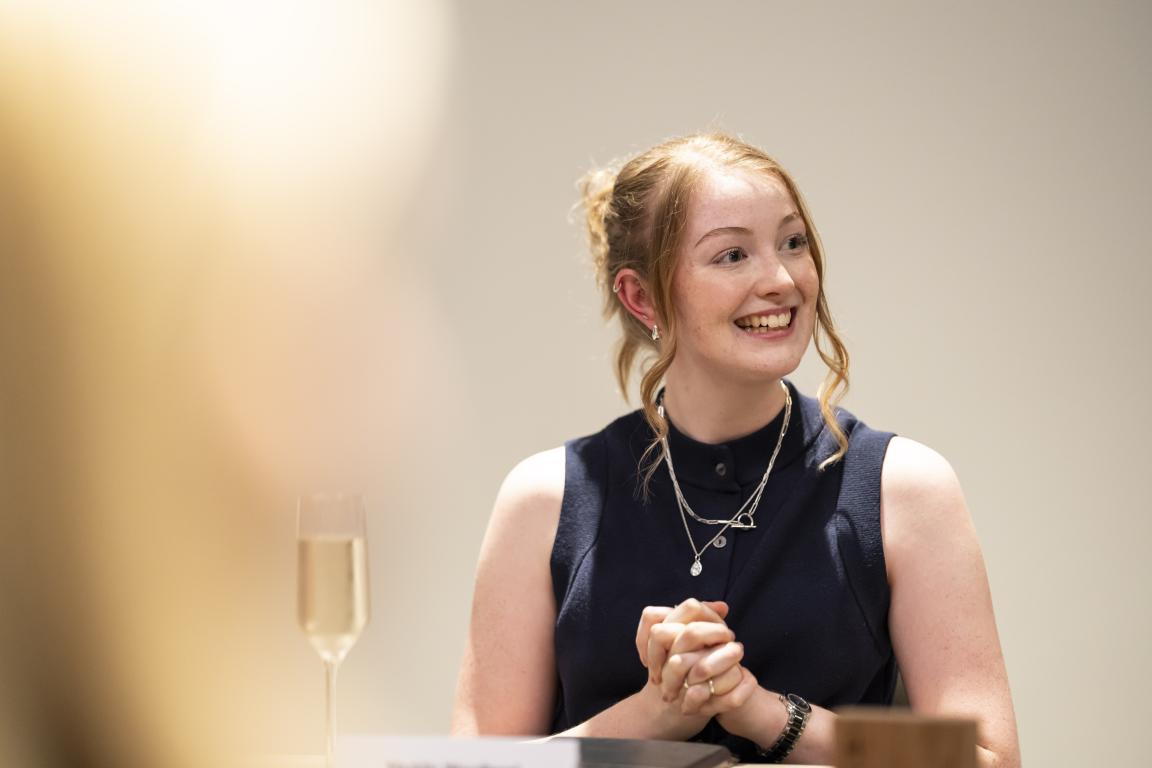
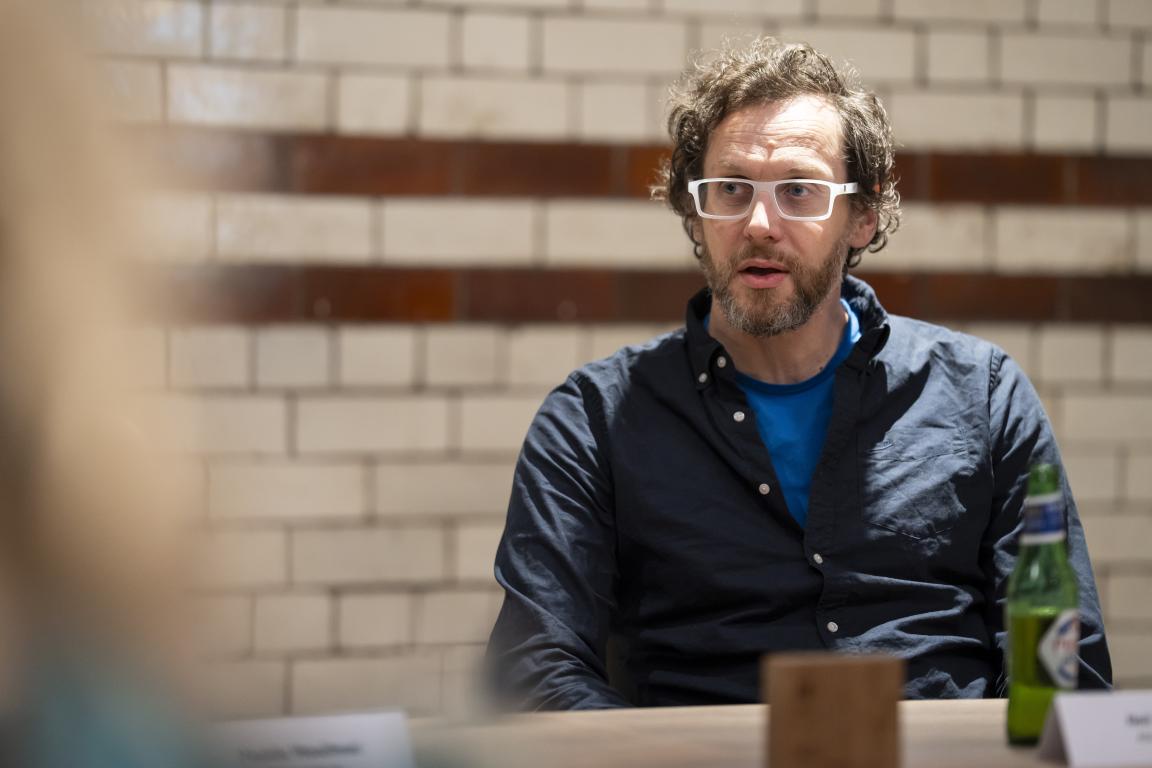
Communicating EDI
“Let’s define EDI then”, said David, “what does it mean to you?”
“To me, it’s about opportunity”, responded Gemma Copp, project architect, DMWR Architects & ESG committee team member. “It's about providing space where everyone can feel safe to be their authentic self. And that comes through in lots of things, like shared vulnerability, and that's why it’s important to ask the question, how can we measure it? We’ve got these policies in place, and legislation, but do we know if it's actually working? Do we know if people are feeling safe, and the settings are giving people the same opportunities?”
For Richard Bailey, architectural & design consultant, Crown Paints, “it can’t be cut and paste. It's all about engaging with the end user and finding out what they need.”
Maddie feels it means “safety”, two-fold – “for the people that we're trying to design for, but also safety for us to talk about the things that we think are challenging.”
“I think we design for everybody”, answered Neil, “because everybody will fit into EDI if we expand it to its broadest sense. Everybody has their quirks and fables around neurodiversity, as much as people that have physical disabilities. And so, the reality is, we need to design for everyone.
“The problem that we face is that we only see design problems from our own perspective”, he continued, “so whatever perspective that is, whatever lens we can apply through experience, through shared experience with loved ones or whatever that might be, you can't do any more than design within your own frame of reference.
“What you can do, though, is include others in that journey to try and make sure that you've captured as much as you can.”
Abigail agreed with this approach. “Have these consultations. Then even if you don’t know the end user on a particular project, you’ve done the community engagement before to learn from and apply.”
Nods from around the table signalled agreement on this point.
The challenge then lies, according to Leanne, in convincing all clients it’s needed – comparing the conversations around EDI to those had a few years back about sustainability.
“It's about educating people as well, and it's difficult”, she said. Working primarily in the hospitality sector, it’s about “making a space look good while also ensuring everybody feels catered for.”
“And does neurodiversity play as critical a role as physical disability in design consideration?”, David asked.
“Potentially not – we need more roundtables like this, and more discussions, on the topic. I do feel like this year neurodiversity is coming more to the forefront.”
Speaking of a live food hall project, Leanne shared that the acoustics have been given much thought, “Noise can be triggering for people.”
“In terms of raising the awareness of physical disabilities - we've been on that journey for quite a while and it's great - and now people talk about neurodiversity as well. Are we on the same path as we were for raising the profile of physical disability with neurodiversity?” David asked Sara.
“I think it's interesting”, she responded. “Building Regulations, for example, change every time there's a disaster.
“In Manchester, there's a very strong lobby which produced the document Design For Access, which is mostly for physical disabilities. But when looking in the neurodiversity field, where are the regulations? There wasn’t anything in the Building Regulations.”
This has meant for a long time that “a lot of people were excluded from going to a restaurant”, Sara commented, because of factors such as the noise, or the volume of people in an open space. For some, that’s sensory overload. And for others, not stimulating enough. Sara’s son has autism and as a family, she says they’re still learning – something that’s key, she believes. “We don’t fully understand it all and it’s not being discussed, people don't know about it, so if we’re still learning, how can everybody else fully understand? The good thing is that we've got these conversations now.”
Focusing on the architecture of buildings, David asked Neil about his clients’ sense of neurodiversity.
One particular client, Government Property Agency, ensures EDI runs throughout all its projects, Neil says, such as the Manchester Digital Campus, which has just received planning permission.
“We tend to work for larger organisations who have a general awareness of it. GPA is a slightly different client that was really adamant that our design approach needed to fully incorporate EDI. They set good examples of wellbeing, and they also have all their properties surveyed through Leesman, getting amazing scores – the top 5% in the world.”
“How do you ‘sell’ EDI as a concept to other clients then?” David asked.
“Internally, we have accessibility specialists who have given seminars about this for years, but what we promote to our clients is that it’s really about ‘good design’, and ‘good design’ means beneficial things for business. It means staff retention. It means bringing in a more diverse range of staff. It means offering more to the staff that you have.”
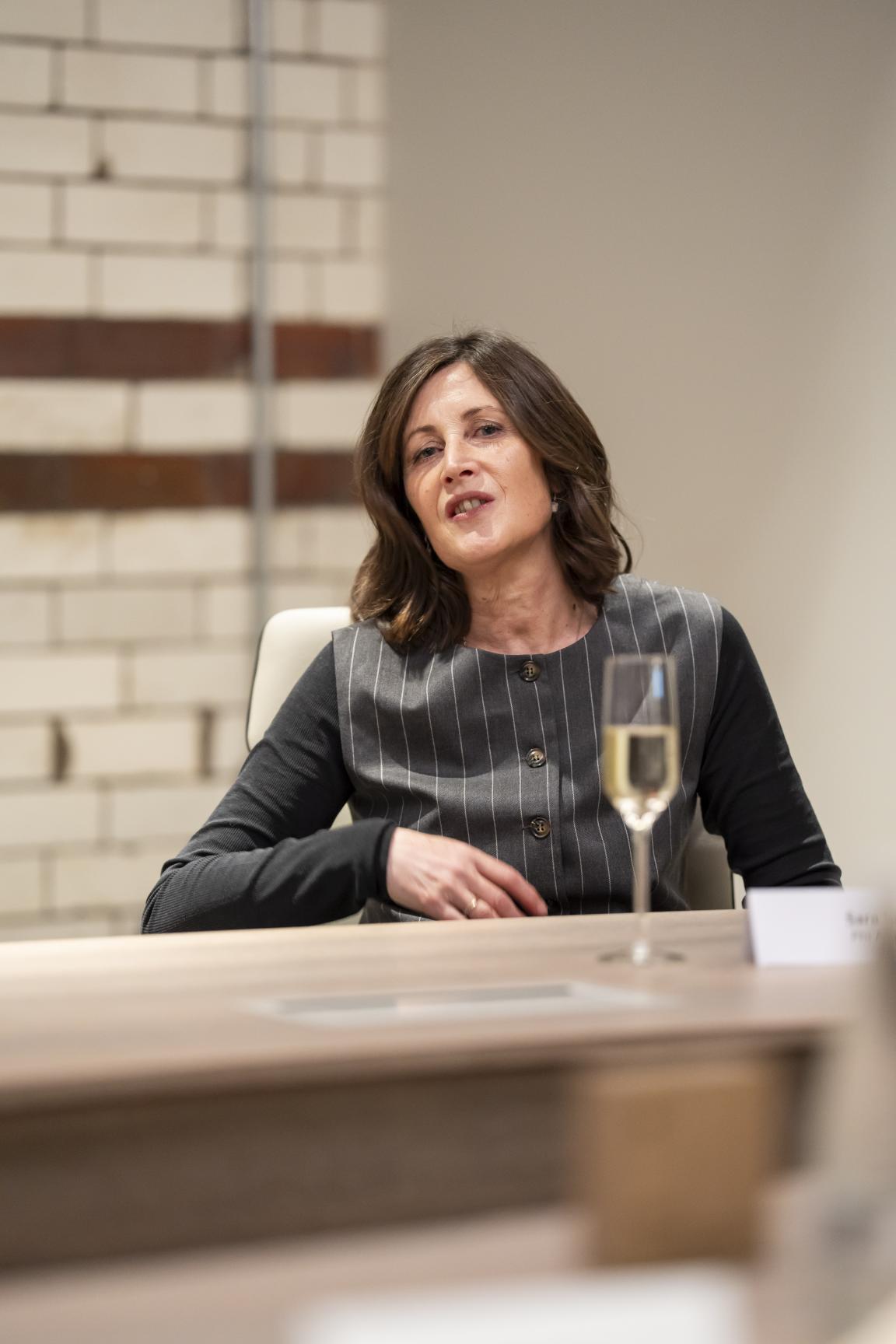
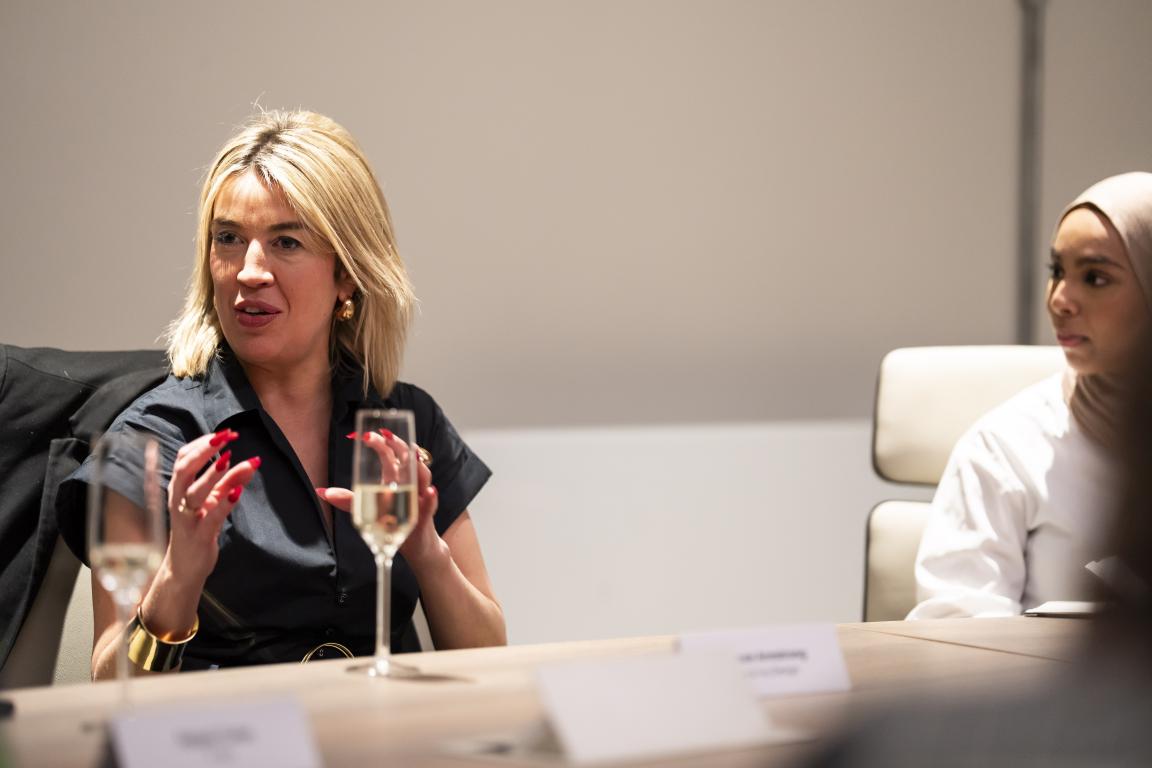
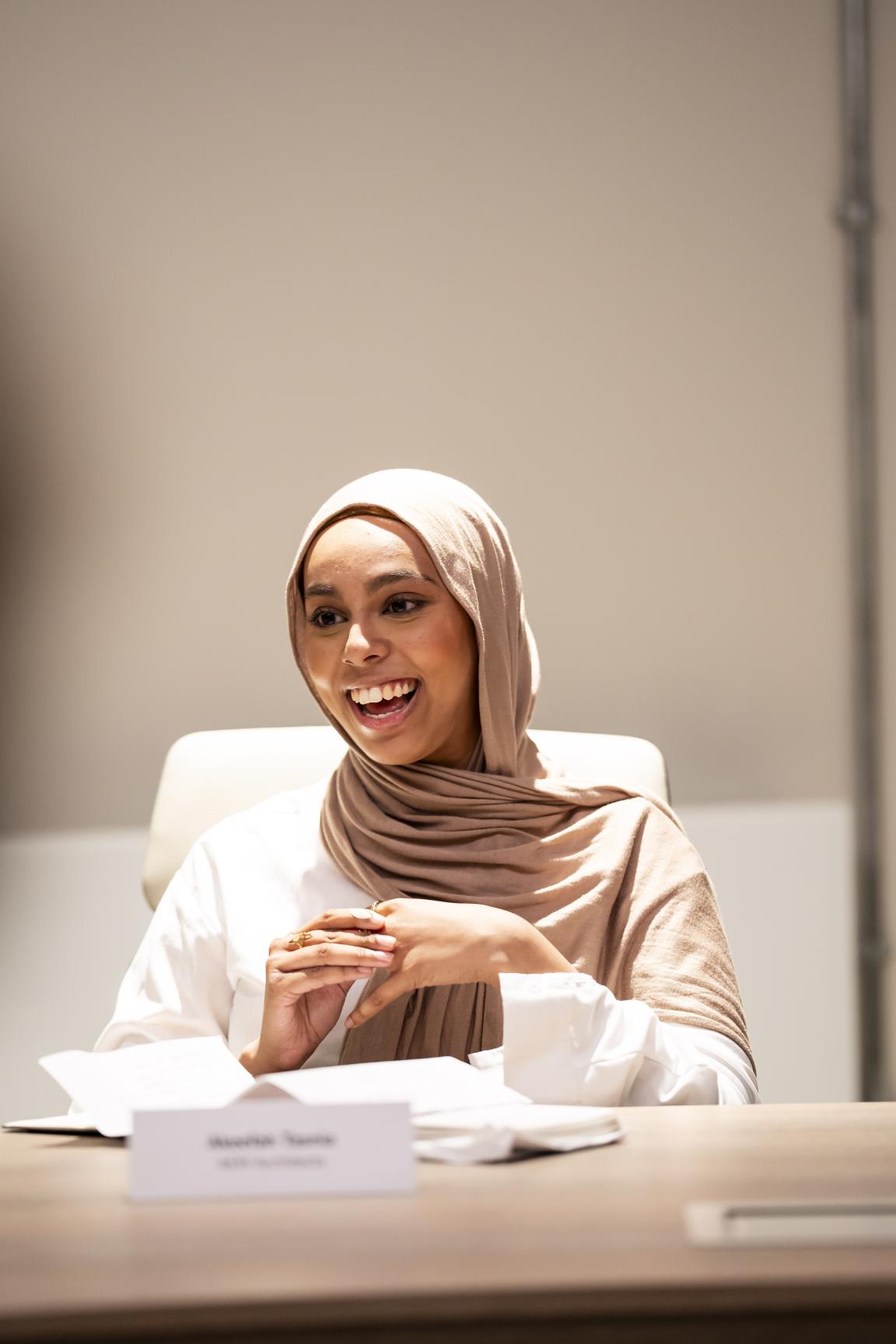
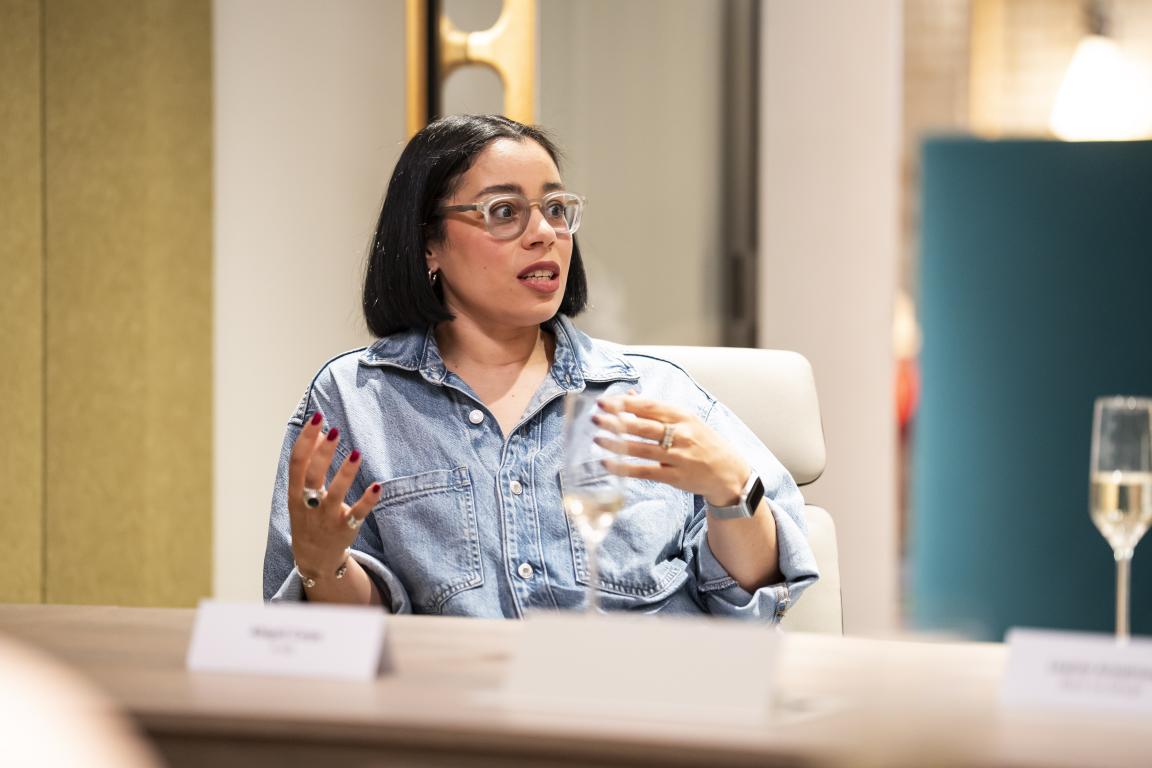
Designing for all
Taking on another big question, David asked the guests to consider how we “design for all?”
“Do we start at the bottom and design for those that are in the least fortunate or privileged positions?” Gemma suggested.
Sara responded there would be some areas of conflict – “And you don’t want to end up with something so general that it doesn't cater for anyone’s needs”, she commented. Instead, where there is an end user, the best route is to speak with them directly, Sara added.
Maddie believes it’s about “adaptability” – “Making spaces that people can adapt as they need to.” Plus, not seeing things in silo. “Sometimes it's ‘designing for inclusivity’, ‘designing for sustainability’. Actually, a lot of those things overlap more than we sometimes remember. And designing an adaptable space also makes it sustainable, because we can adapt it for multiple reasons. So it’s flexibility too.”
Neil added “Variety” into the mix too. “The top three things would be: variety, adaptability, flexibility.”
In hospitality, that would apply to a customer being able to choose whether they sit in a noisy environment, or a quiet one, was the example raised. Similarly, a bright environment or a dark environment. “That ability to choose, and then being able to adapt and flex”, says Leanne, “it also applies to workplace settings too.”
“You're more productive when you're comfortable”, Maddie added.
David asked, “is it always possible to create that variety of spaces?”
“It depends on the size of the scheme, and the size of the client's budget”, answered Neil. “But you look for opportunities to create that. You have to be creative.”
Steering the conversation back to stakeholder engagement, David asked, “I’m assuming you engage with end users to find out what they want, but how can you do that for future employees?”
That’s where the flexibility comes in, Abigail said. “Knowing that spaces can be adapted.”
The notion of designing for everyone she illustrated anecdotally in a primary school project where teachers were consistently suffering with back pain through bending down to help students. This was discovered at the consultation stage.
“A tiny thing was to change the chair for every pupil in the school. And so the chairs were at the 450 standard height, and the children climbed onto the chair. It just meant that all the staff could then sit on a standard chair, rather than bending down or sitting on the floor, so it totally changed the way that these primary schools operated, just because everyone was elevated up”, she explained.
“It’s getting as much information and knowledge as you can, so that you've got a toolkit of parts to use across projects.”
Making changes to positively affect all was a point the discussion continued on. David said, “you have to design for somebody in a wheelchair. But how do you acknowledge that somebody in an environment would be concerned about over exposure of noise, for example?”
It’s looking at the most sensitive sensory things, came the response.
“People say you can't meet everybody's needs. But an environment that's very calming and designed with sensory sensitivity in mind is actually beneficial to everybody”, Sara suggested.
Covid, it was said, was a turning point in people understanding more about their own needs. A sentiment shared at our recent seminar on the topic of EDI. And with the office’s role now the facilitator of socialisation, areas for calm have perhaps never been more important to those seeking quiet.
Neil shared that AtkinsRealis has a calm room at its office in Piccadilly Place. “We don’t encourage people to work from there all day, but to use when they need that space.” Acoustics have been applied, and the lighting is lower with individual reading lamps for user control. There’s also a no mobile phones or Teams rule.
At Material Source Studio Manchester, a similar set of spaces are provided in the Hub. Akeefah brings this up as being an ideal area for people to pray. “When I arrived today, I asked whether there was anywhere I could pray, and the pods were suggested. I like that multi-use aspect of it. And that flexibility that allows for the unexpected sometimes.”
“Calm seems like it might be part of the answer, then?” Asked David. “Because now, the office has become largely about collaboration?”
“It’s for collaboration, and conversation too”, said Abigail.
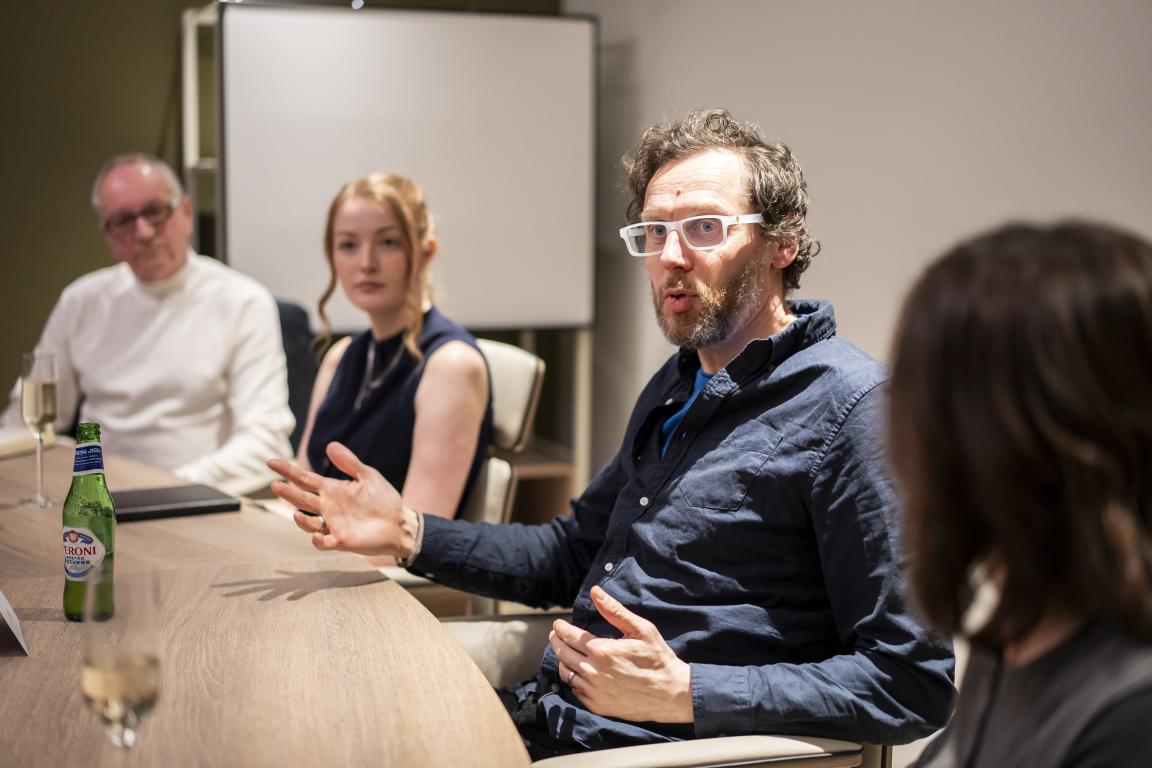
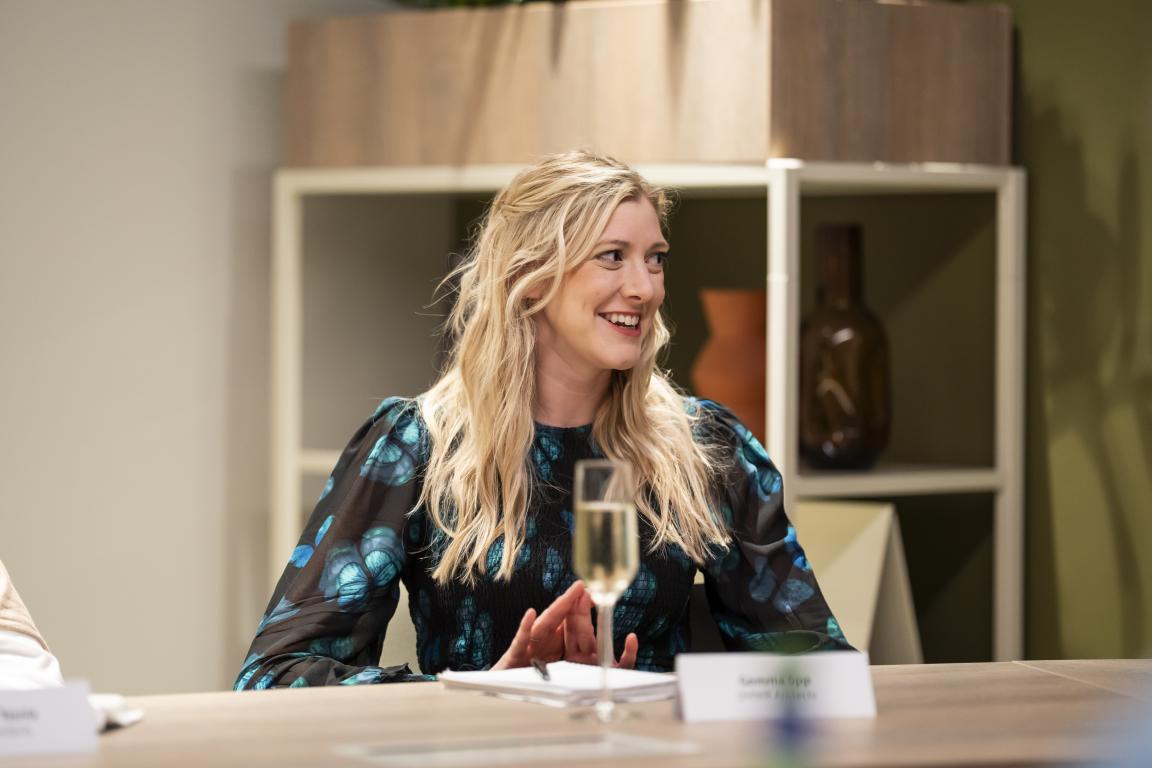
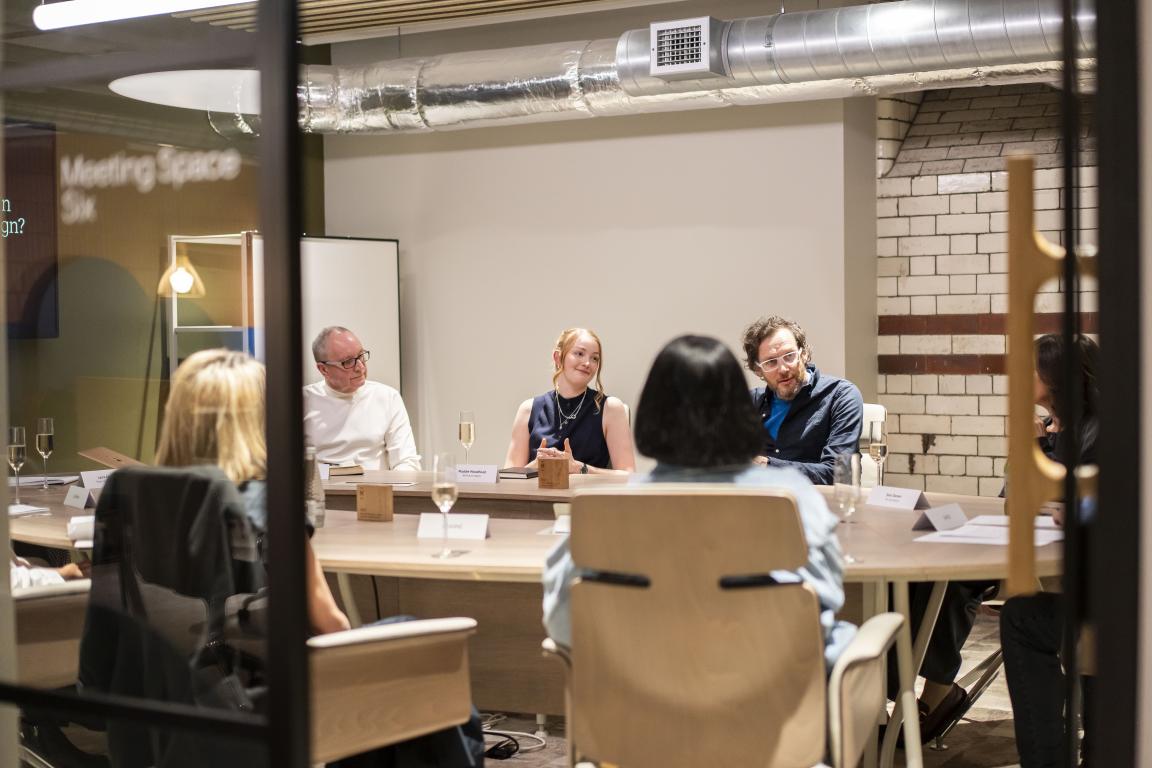
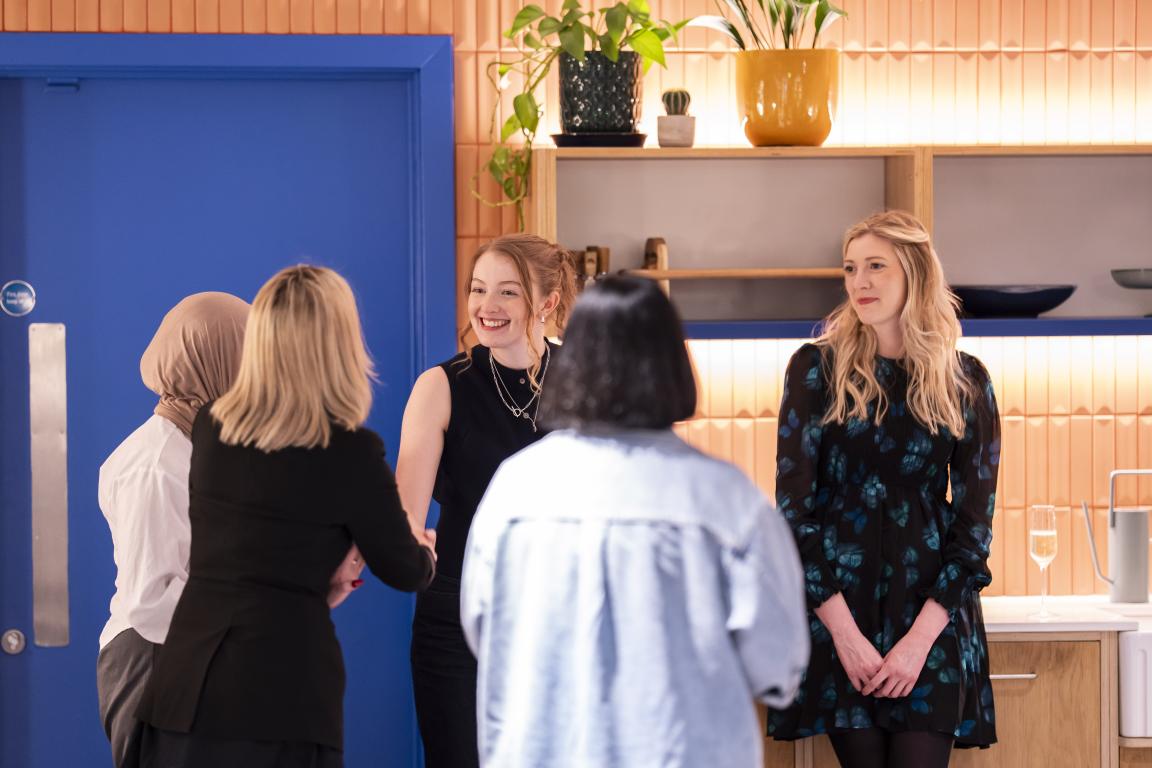
What’s the measure of EDI?
The conversation landed on measurement and metrics. How do we know that what’s being designed is working?
“We have to revisit projects”, commented Abigail, “and share learnings.”
“Is this always done?” Asked David. “No’, was the resounding reply.
“When you mention the school project and the chairs – is that being fed back into the system?”
“Covid was obviously a national disaster that we've all learned from, but it’s not necessarily continued with all things”, suggested Abigail.
Neil highlighted this is an industry issue, perhaps. “We've not really moved forward in some areas just because we don't, as an industry, share and learn lessons to make changes.”
And in some cases, Neil believes the data just doesn’t exist. That it’s more prevalent in workplace than in hospitality, for example.
The possibility that this could be down to people keeping their cards close to their chests was proposed. And the guests believe that could be two-fold. The details of ‘good design’ being kept quiet, or perhaps end users keeping their true feelings to themselves when surveyed about their experiences.
Why is this? “Sometimes when you do voice the fact you want change, you know nothing's going to change, so you stop voicing it”, said Akeefah.
And in addition to people not feeling that what they say will be heard, understanding can be another factor, added Maddie.
“I think that if we give people more knowledge about what EDI is and what it encompasses, and that it is all of us, because there are so many people who just think ‘this doesn't apply to me’. But we need to empower people with that knowledge and give them the tools to be able to respond honestly.
“I’ve learnt a lot over the last four-years, and can now better express myself. But why are we giving somebody a survey with some fairly complex questions, and just expecting them to answer it?”
If they felt able to, what factors might people look to highlight? David asked.
Temperature, scent, and noise came the responses.
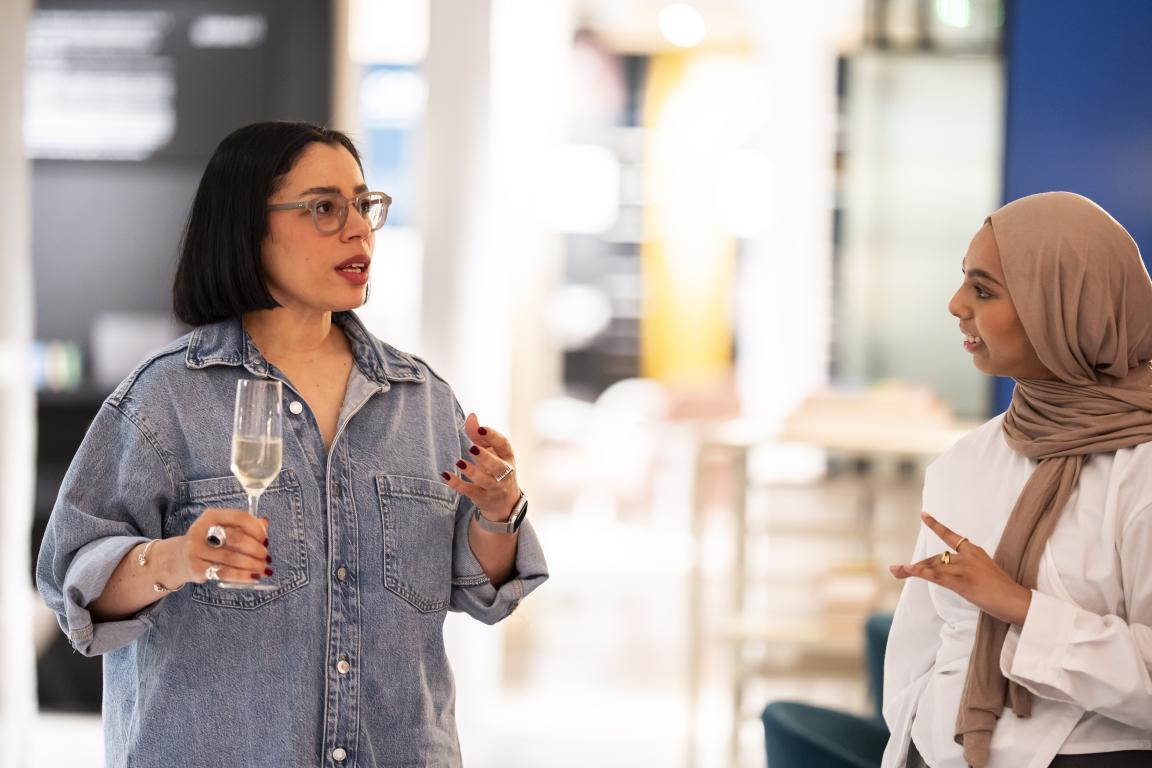
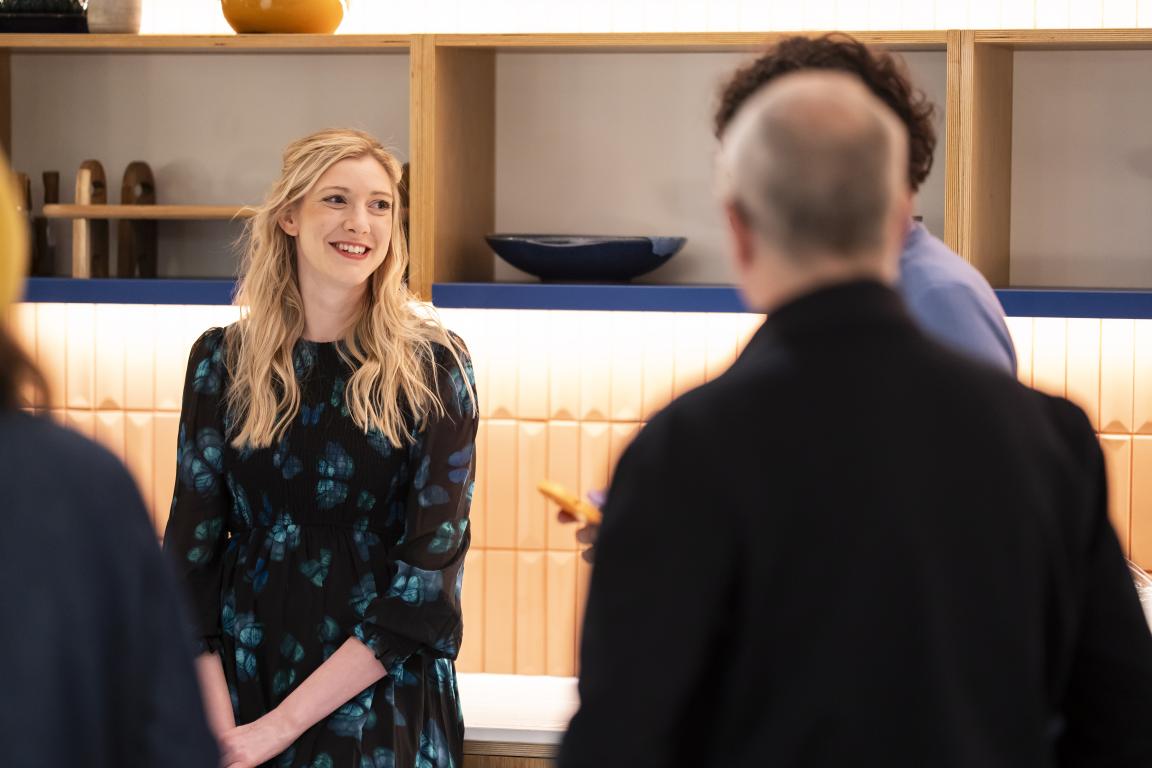
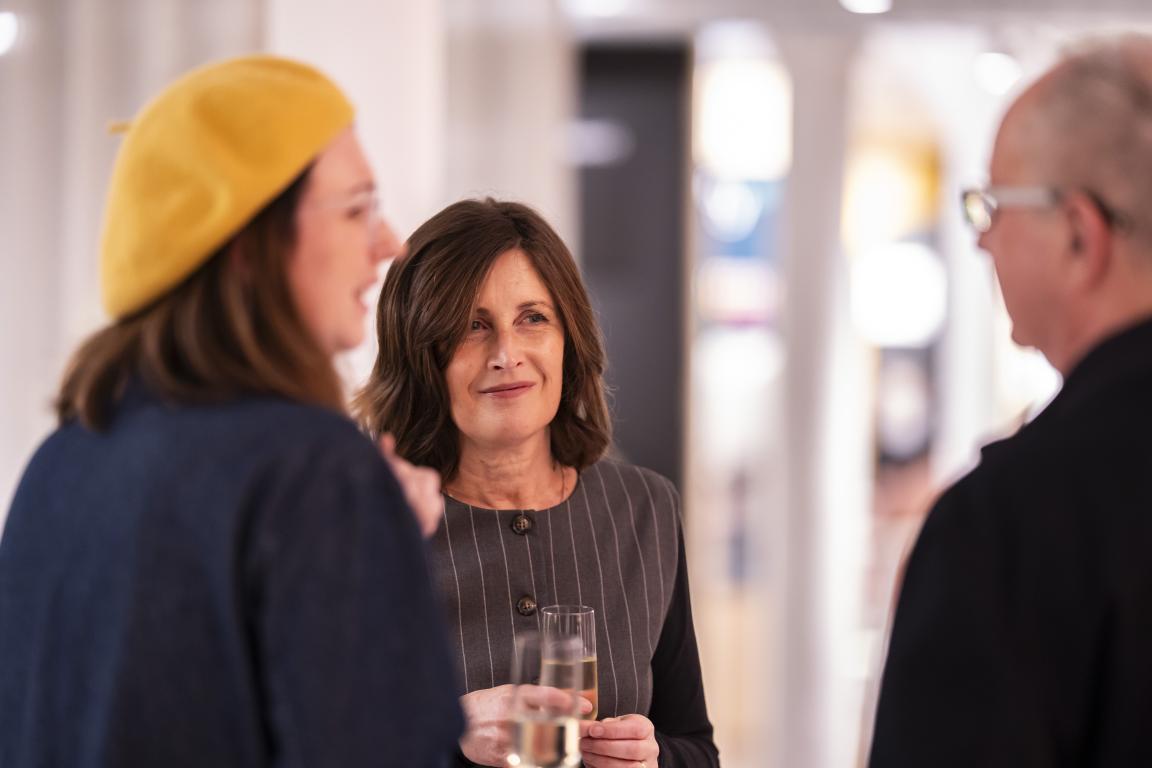
The cost of EDI
“Does designing for EDI cost more?” David asked.
“Not necessarily”, said Neil.
The inclusion of accessible features for supporting physical disability costs around £40-£50k, shared Leanne, and while it is a requirement, for some clients it’s perhaps more of a tick box.
For non-visible disability, Neil says his clients want to “make sure that they are ticking all the right boxes. From a physical point of view, it probably will cost more money, but on the neurological side, it shouldn't cost more because it's just good design.
“However, good design costs more”…
…“It requires consultants, for example”, added Gemma.
This was another point mirrored at our recent seminar on EDI. To craft an ambience that suits many different people’s needs and wants, specialists are best placed to advise.
PassiveHaus feeds very well into designing for EDI, Sara suggested. Factors such as ventilation, fresh air, scent, light, and heat, for example, are considered.
“We always say PassivHaus design is very compatible with ‘inclusive design’, because it's about comfort and creating a good environment.”
The perception of ‘good design’ has also changed hugely in that last 15-years said Abigail. “It used to be about pool tables and slides.
“It's amazing to see the industry change, and that people are really taking EDI onboard.
“And like Neil said about these bigger clients, with the budgets and departments that can actually facilitate this change. It’s nice to be a part of it, seeing this happen.”
Bringing the conversation to a close on this positive note, David summarised the key points.
“We’ve come a long way. And in the next 5-10-years, the workplace has got to be more adaptable, flexible, and offer control. Information sharing is vital, as is utilising the expertise of consultants. We’re talking about it, and I think that’s massively positive. Let’s keep talking.”
A huge thank you to our supporters for this event, Crown Paints, Partner at Material Source Studio Manchester & Glasgow.
We’ll be continuing the conversation over at our Glasgow Studio for our upcoming seminar on 9 April: ‘How do we design for all?’ Get your tickets here.
And if you'd like to weigh in on any of the themes raised in this piece as part of your own interview, please drop us a line.
All image credits: Victoria Middleton



